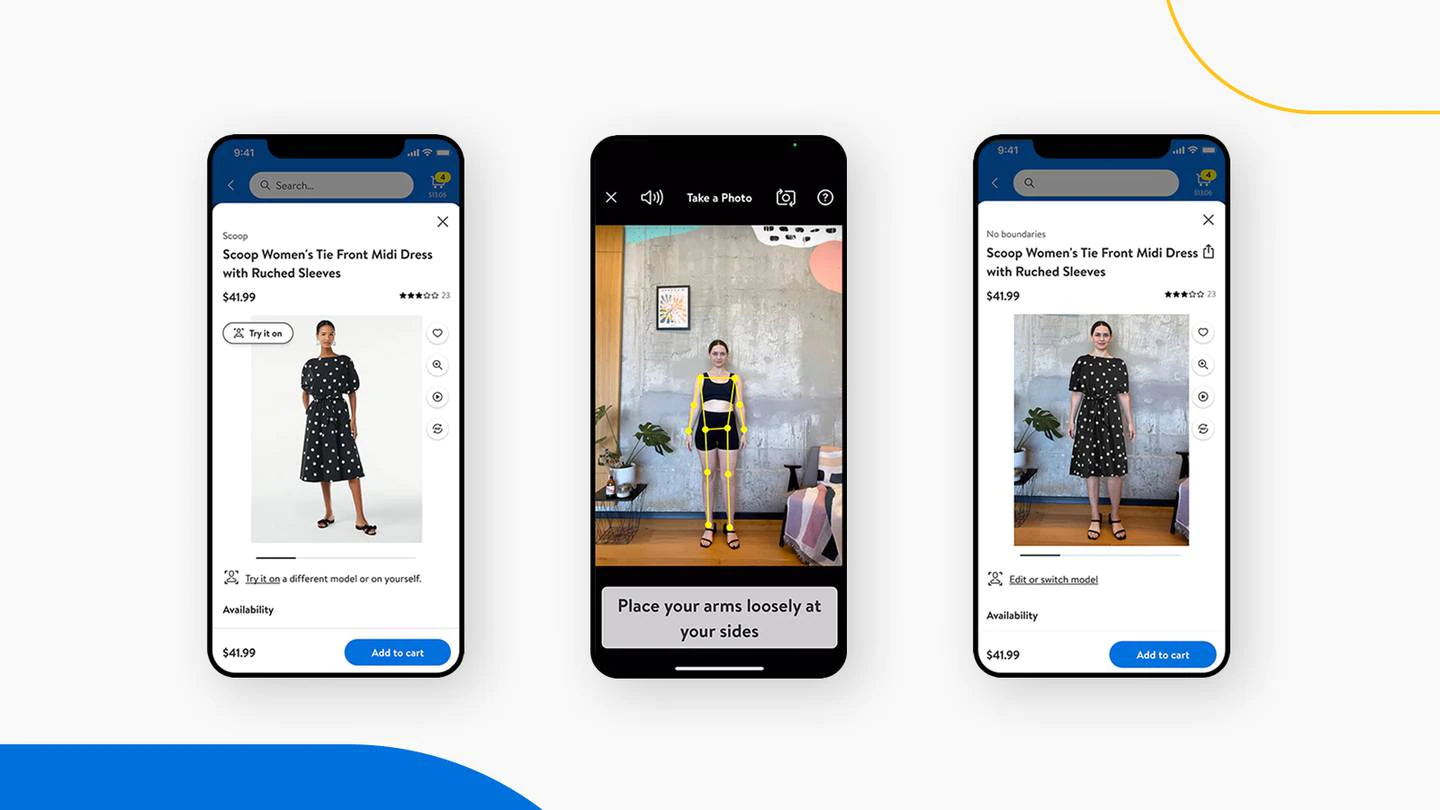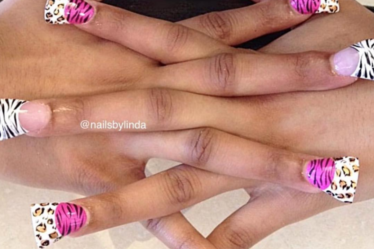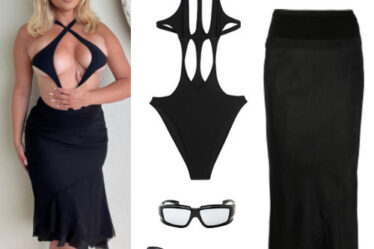
The feature will be available on more than 270,000 women’s clothing items.
The new tool, which builds on Walmart’s earlier virtual fitting room, lets the user serve as the model to get a sense of how the clothing would fit on their body. It works by having the user snap a photo of themself — in tight-fitting clothes or just their underwear — with the Walmart app. The app then uses machine learning to map the body and simulate how a garment would look, down to details such as shadows and fabric draping.
Walmart launched a previous virtual fitting room in March based on technology developed by virtual try-on start-up Zeekit, which the retail giant acquired last year. That version allowed users to choose from a selection of models to see how select clothes with the feature enabled would fit them.
With its expanded feature, “Walmart is the first to offer a virtual try-on experience for apparel brands at scale,” it said in a press release.
If customers use it, it would mark a big step toward mass adoption of virtual try-on technology, which has struggled to gain traction despite being touted as a way to improve conversions and reduce returns. Walmart is the largest retailer by revenue outside China, generating $572.8 billion in its most recent fiscal year, though Amazon is estimated to have surpassed it in total sales.
The feature is currently rolling out to users of Walmart’s iOS app, who will soon be able to use it on desktop as well. It will be available on Android in the coming weeks.
Learn more:
What Will It Take for Consumers to Embrace Virtual Fitting Rooms?
Long touted as a solution for e-commerce’s low conversion rates and ballooning returns, AR and AI-powered fit-tech is gaining momentum — but many of the same old challenges remain.



